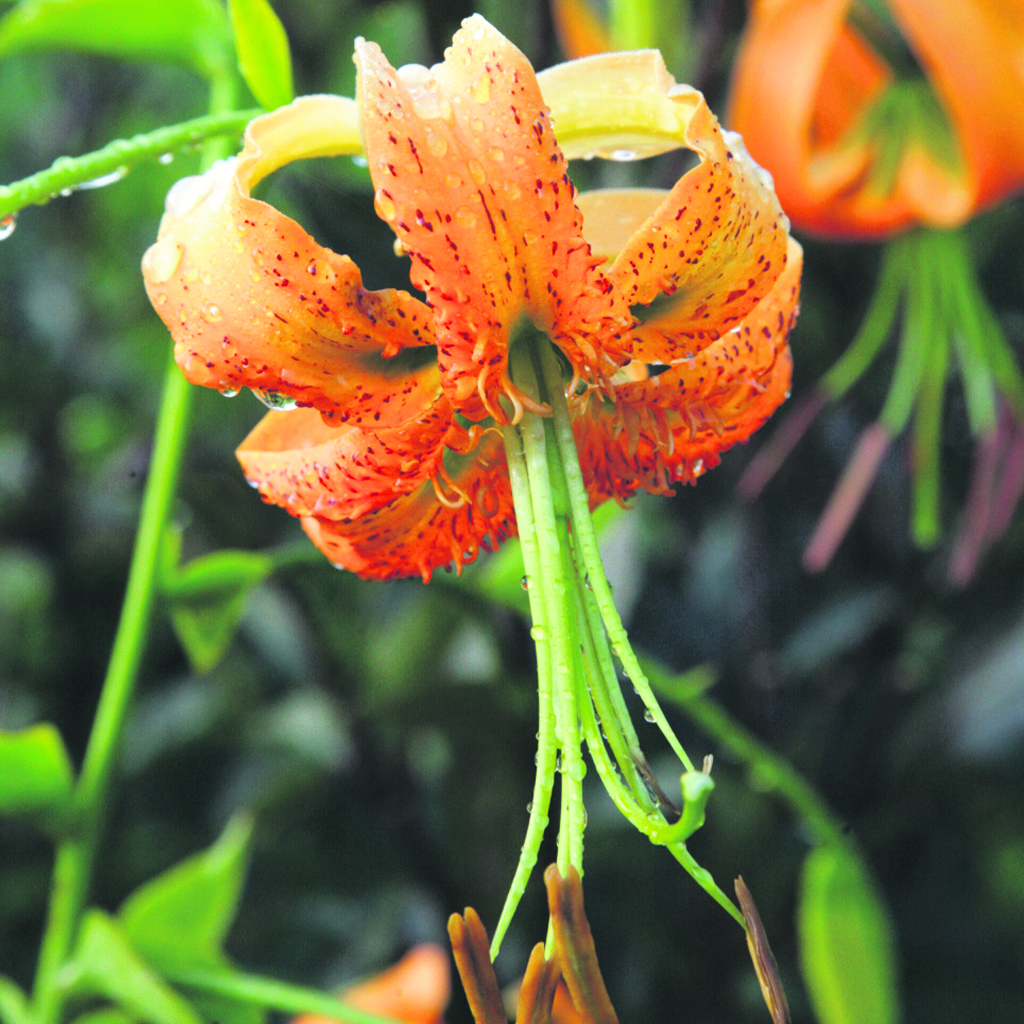
Lilies are the most fabulous of flowers, colourful, fragrant, easy to grow and requiring minimal attention. Nicky Davies sings their praises.
Fabulous – certainly. Colourful – definitely .Close to our hearts – always. Lilies are often brightly coloured and boldly fragrant and the flowers are a very glamorous addition to any garden where they can be grown in containers or combined with other flowers in the border.
Arising from plants made up of lose scales attached at the base, lily plants are diverse and the flowers vary enormously.
They are so variable in fact that they are classified into nine divisions depending on where their original parent species grow in the wild. These divisions help indicate to gardeners whether they are likely to be scented or not and what conditions they prefer.
However, as lilies hybridise so readily and have been cultivated for so long they can be hard to pin down to precise categories.
For most gardeners it’s best not to worry too much about classification and just enjoy those that you find grown well in the conditions you provide.
Everyone loves lilies! Grown from bulbs, lilies are perennials that require minimal care if planted correctly. Most lilies do well in containers and look spectacular in a vase.
True lilies belong to the genus Lilium and grow from plump, scaly bulbs. Several popular lily species exist, including orientals, asiatics, orienpets, and species types.
We say ‘true’ lilies because there are also plants, such as daylilies, peace lilies, and canna lilies, which have the term ‘lily’ in their common name, but they’re not actually lilies at all. They do not grow from bulbs but are in a different plant genus.
With 8,000 or so varieties, lilies parade an endless range of colours, shapes, heights, and bewitching scents. Lilies have six plain or strikingly marked tepals (“petals”) and are often trumpet-shaped, sitting atop a tall, erect stem with narrow, long, lance-shaped leaves. They come in many beautiful colours, including pink, gold, red, orange, and white.
Most lilies also take readily to containers at home in formal and naturalistic settings. Plus, they make excellent cut flowers!
To create a sequence of lily blooms in your garden, remember that Asiatics generally flower first, followed by Orienpets and then Oriental varieties.
Asiatic lilies
Are the earliest to bloom (usually in May or June), right after peonies. They are also the easiest to grow, as long as they are planted in well-draining soil, not waterlogged. They are the shortest type of lily (about two feet tall) and come in many colours, from pastel to tropical. Hybrids come in pure white, pinks, vivid yellows, oranges, and reds; heights are from one to six feet. Intense breeding has erased much of the Asiatics’ fragrance, but despite their lack of perfume, they are a favourite with floral arrangers.
Oriental lilies
Have that famously intoxicating fragrance. They are tall and stately (4 feet), and tend to grow more slowly. Oriental hybrids bloom in mid- to late summer, just when Asiatic lilies are beginning to fade. Orientals are always a striking choice, producing masses of huge white, pink, red, or bi-colour blooms. They make wonderful cut flowers that fill even the largest rooms with spicy scents.
Easter lilies
Are most commonly grown indoors as a holiday plant. As their name suggests, they are typically forced into bloom around Easter, in March or April.
Trumpet lilies
Are similar to oriental lilies, producing many blooms with a nice scent. Their flowers tend to be smaller and more closed (like a trumpet) than those of the other lilies.
In the wild lilies can be found in a range of habitats, from rocky mountain crags to alpine meadows, wetlands to prairies and forests which leads to a range of supremely adaptable garden plants. In recent years they have seen an explosion of breeding and diversity and there are many new hybrids available. They originated from eastern Asia around 20 million years ago.




My favourite four
Lilium Henryi was introduced to the west by Professor Augustine Henry who found it near the Yangtse River in 1888. Reliable and fast growing it enjoys limy soil and can reach two metres in height.
L. ‘Casa Blanca’ this lily has huge white scented flowers around 10cms across with a hint of green at the bottom of the bloom. It flowers from July to August.
L. ‘Pink Perfection’ a relative newcomer introduced in the 1960’s this is a magnificent cultivar which can grow up to 2metres tall- a lavender pink which flowers in July.
L. martagon unusual in that it favours shaded woodland and had neat speckled flowers slightly scented.











